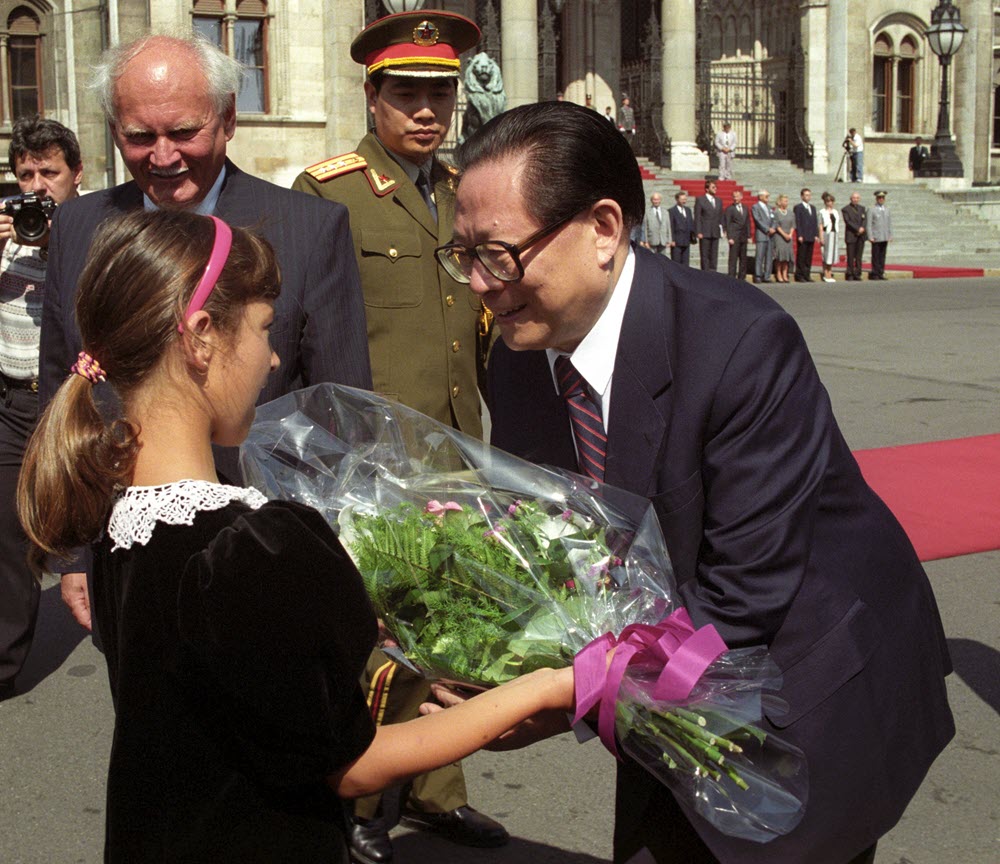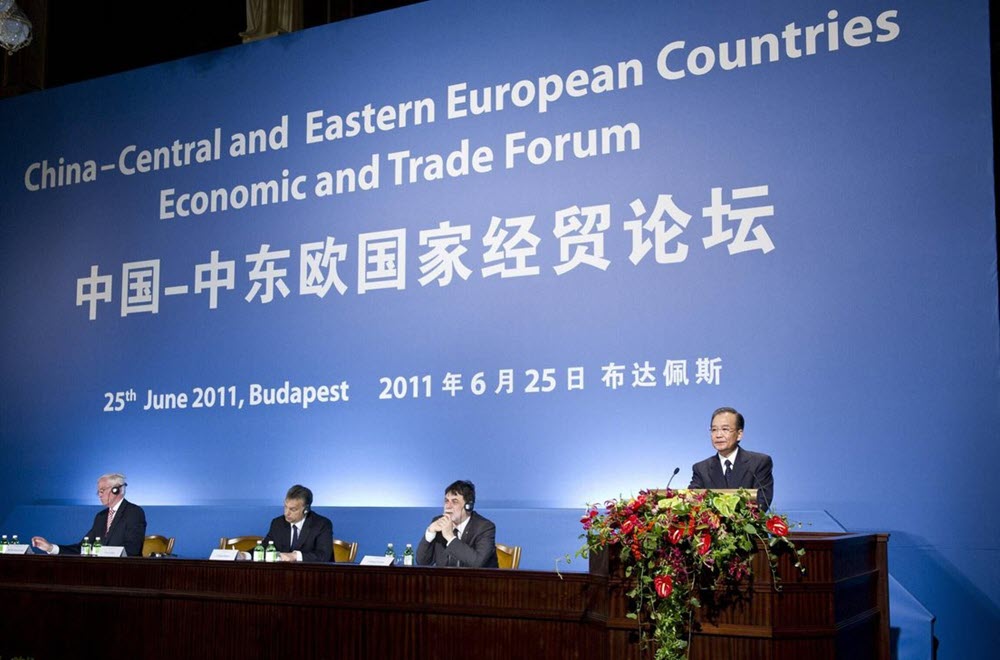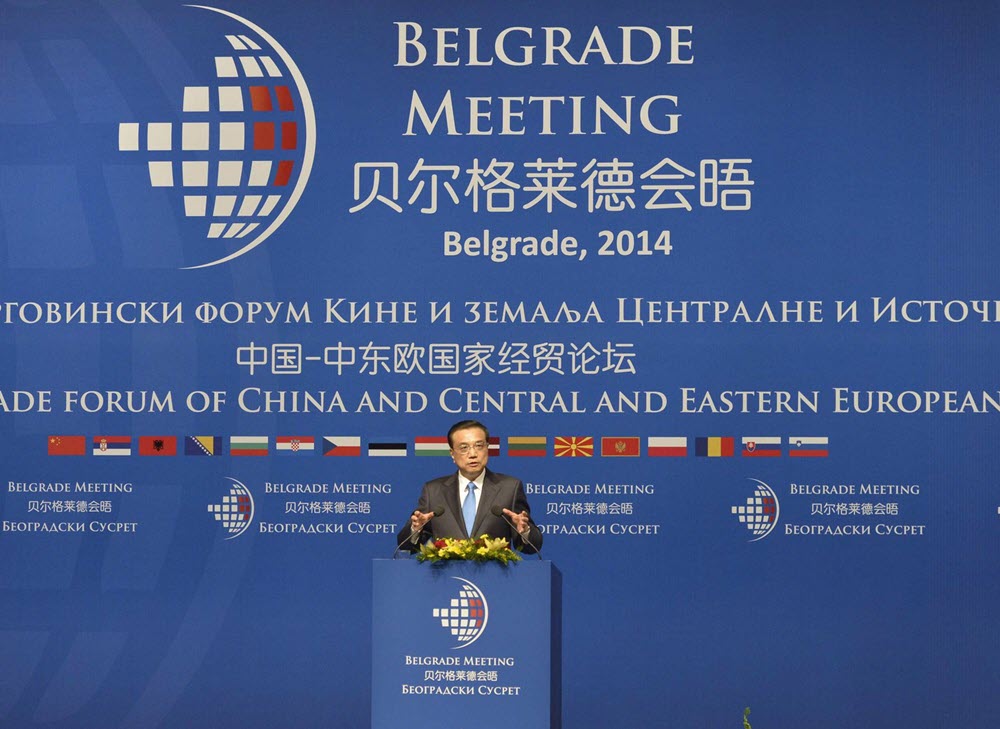During the 1990s and 2000s, the People’s Republic of China (PRC) paid little attention to Eastern European countries that had moved away from socialism.[1] Its foreign policy focused on countries in its immediate neighborhood, Asia, and Western Europe. China was more invested in strengthening relations with Russia and the post-socialist nations within Russia’s sphere of influence. However, in the early 2010s, China’s approach changed drastically. It actively worked to enhance ties with the diverse Central and Eastern European region, showing a campaign-like commitment to building these relationships.
This essay looks back on the last decade of China’s engagement with Central and Eastern Europe (CEE) and analyzes the outcomes of its initial geopolitical ambition of adding CEE countries to its strategic space. The first section considers the historical context of this effort. The second section then looks at the initiatives, activities, and outcomes that followed. China aimed to create connections to Europe through its Belt and Road Initiative. Geopolitically, it sought allies within the European Union using shared past experiences, but economic interests prevailed for CEE states.
The essay concludes by arguing that China’s effort to include CEE countries in its strategic space has produced mixed outcomes. Geopolitically, in some cases, such as Hungary and Serbia, local political actors have used China to enhance anti-European sentiments and homegrown political agendas. Geoeconomically, results vary. Soft-power tactics in the Baltic countries of Estonia, Latvia, and Lithuania and the Visegrad countries of the Czech Republic, Hungary, Poland, and Slovakia have achieved some success, but the pandemic and China’s stance on Ukraine strained these efforts in most cases. Despite these challenges, China will not withdraw from the CEE region. Armed with a decade of experience, it aims to maintain its geopolitical, geoeconomic, and societal influence in the region through promoting bilateral ties and alternative visions.
Far Away and Not Quite Europe: Lack of Exchanges during the 1990s and 2000s
Following the fall of the iron curtain and the collapse of the Soviet Union, China initially showed little interest in greater Eastern Europe. Apart from some bilateral relations with the bigger countries of the region—for example, Premier Li Peng’s visit to Romania in 1994 or President Jiang Zemin’s visit to Hungary in 1995—the interest of the PRC did not extend into the European countries that had done away with socialist systems and established or re-established independence in the 1990s.

This approach was rooted in the foreign policy principles of the Jiang Zemin era. First, under Jiang, China concentrated on relations not just with neighboring states and other Asian countries more broadly but also with the economically advanced Western European markets as part of its bid to join the World Trade Organization and pursuit of “favorable conditions and opportunities brought by economic globalization.”[2] Second, Jiang stood by Deng Xiaoping’s formula for China’s own limited foreign policy outreach of “calm observation, composed response, avoiding taking the lead, and taking action when necessary.”[3]
Third, and most interestingly, Jiang invested in deepening Sino-Russian relations and building new links with China’s northern neighbor to catch up after the awkward 30-year silence following the Sino-Soviet split.[4] The Chinese foreign policy establishment was driven by a perception that most of the post-Socialist countries, independent or not, were still a part of the Russian historical sphere of influence. In the Baltic states of Estonia, Latvia, and Lithuania, this approach was illustrated by the human resources policy of the Ministry of Foreign Affairs and some state-related entities, including the Xinhua news service: the employees and diplomats stationed in those countries were primarily Russian speakers whose experience had mostly been with socialist states.
During this period, China did not see Eastern Europe—or, more accurately, the historically, geographically, linguistically, religiously, and culturally diverse parts of Europe not covered by the Western countries—as part of its strategic space. As long as the countries were not deepening their relationships with Taiwan, something Latvia had tried in 1992–94, they were of little interest to China. But then in the early 2010s everything changed. Even though the first China-CEE exchanges took place during the later stage of the Hu Jintao period, cooperation intensified as the region was absorbed into Xi Jinping’s vision. The official Chinese historiography de-emphasizes Hu’s role and exclusively features Xi’s discursive markers, describing China-CCE cooperation as “an innovative move of great-power diplomacy with Chinese characteristics, and a highlight of the implementation of the ‘Belt and Road’ initiative in the European region.”[5] China launched an effort to map, deepen, and systemize the relationship with the “new Europe” with an intensity that can only be characterized as a campaign.[6]
A Sudden Spike in Interest: Friendly Initiatives, Platforms, and Visits

After China conducted few and far between exchanges with CEE in the 1990s and 2000s, in 2011 Premier Wen Jiabao brought the Baltic, Visegrad, and the Eastern and Western Balkan states—a total of 16 countries—together in Budapest for the China–Central and Eastern European Countries Economic and Trade Forum. Wen promised to increase bilateral trade, promote two-way investment, enhance cooperation on infrastructure construction, deepen fiscal and financial cooperation, and expand exchanges in education, culture, health, sports, and tourism.[7] After the dramatic drop in GDP of the European countries caused by the global financial crisis, China’s offer sounded interesting to the affected economies. It was no time to argue regional identities but, rather, was a time to seize the opportunity. The goal was to use China as an economic accelerator, much like big EU members had done in the decades since the 1980s. In the eyes of CEE states, it was their turn to export to China and to thus narrow the gap with the Western economies.
One year later, all sixteen countries were present in Warsaw for the launch of the Cooperation between China and Central and Eastern European Countries (China-CEEC Cooperation).[8] As a sidenote, Jiang Zemin’s perceptiveness of Russia’s sensitivities was passed over into the Hu Jintao and Xi Jinping era, at least partially, as the sixteen states invited to join the platform did not include Belarus, Moldova, and Ukraine. The official explanation for excluding these countries was that they were considered “special” and already had strong bilateral strategic partnerships with China. However, the reality was that China was treading carefully in a region still seen as being under Russia’s influence.
In 2013, Xi announced a wider vision—the Belt and Road Initiative, initially called “One Belt, One Road” in English.[9] The initiative viewed the CEE region as an important connector between the PRC and the EU market, though the role of specific countries was obscure. The motivation for CEE countries to take part in China’s new vision was clear—to boost exports, attract FDI, and make use of national infrastructure that was becoming more expensive to maintain due to decreasing cargo flows. But the drivers behind China’s turn toward CEE were less obvious. What had triggered the sudden interest, and what was behind the particular region-shaping exercise Beijing had undertaken?
The Chinese push to include the CEE region within its strategic space coincides with Beijing’s turn toward a more engaging foreign policy. To a large extent, this interest toward CEE was a legacy of the Hu and Wen era rather than a pure innovation of Xi. The gradual shift in China’s foreign policy outlook can be broken down into sectoral motivations.
Geopolitically, China aimed to approach Europe from both the east and the west. Looking to gain friends in CEE to express support for China in the EU and other supranational settings, Beijing deployed a campaign that used common experiences as a way to manipulate the perceptions of countries in the hope that the legend of a shared socialist past could become a facilitating factor. This hope was a miscalculation. Even the countries that had conducted some exchanges with the PRC during the socialist period, including Poland, Hungary, and Albania, were not particularly enthusiastic about building a new relationship on these past foundations, instead marketing themselves as vibrant business communities integrated with Western European value chains.
Geoeconomically, China sought to enhance its transcontinental connectivity. The vision that has been gradually taking shape in the form of the Silk Road Economic Belt—the land corridors of the Belt and Road Initiative—and currently involves regional rather than global projects initially concentrated on one priority: reaching and supplying the European market via railroad connections. From China’s standpoint, the CEE countries were naturally suited for this role because of their location, with the added value of being politically and economically stable enough not to implode and endanger China’s networks.

Finally, when listing motivations, curiosity should not be discounted. China’s inclusion of CEE in its strategic space revealed a desire to build expertise and explore new opportunities. Experimental programs for teaching CEE languages at Chinese universities are a testament to this—for example, the establishment of the Department of Chinese and European Languages and the School of Non-common Languages at Beijing International Studies University in 2015.[10] Tellingly, the experiment has largely fizzled out along with the wider CEE charm campaign.
Chinese strategic thinkers expected to gain certain benefits from including the region within China’s “greater periphery.” Beijing viewed CEE as a soft underbelly in two ways: first, as an easily openable gateway to the wealthy markets of Western Europe; and second, as an opportunity to acquire political influence that could then be used to build a pro-China faction within the EU. There was a tangible differentiation in Chinese thinking between Western Europe and CEE, with the latter being in a different category because of its Communist past, limited international influence, and comparatively weaker economies.
Interestingly enough, these attempts came before Xi formulated an openly anti-Western vision for a new world order in his Global Security Initiative, Global Development Initiative, and Global Civilization Initiative. However, there was a gap between expectations and delivery, exemplified by initiatives such as the 16+1 framework. In a sense, these early attempts were sporadic, resting on China’s previous South-South experiences rather than an understanding of the region or regions included. The initial presentation of the 16+1 framework as a new multilateral platform driving economic cooperation disguised the reality of it being a hub-and-spoke arrangement built on preexisting bilateral relations. Most member countries eventually picked up on this underwhelming dynamic. This, coupled with the widening geopolitical rift between China and the West, pushed many countries to decrease their level of participation and resulted in the three Baltic states’ abandonment of the 16+1 mechanism altogether in August 2022.[11] The high point of China’s strategic engagement campaign had passed.
The Legacy of China’s Strategic Engagement Campaign in Central and Eastern Europe
Today, the success of China’s geopolitical outreach in adding CEE countries to its strategic space varies across the regions. In Hungary, for example, China’s presence has facilitated local anti-European agendas. In Serbia the exchanges with China are active, and “Serbian authorities are now actively promoting Chinese narratives,” including the endorsement of the Global Development Initiative.[12] Geoeconomically, the outcomes have been mixed, ranging from a complete break with China (Lithuania) to a continuation of cooperation on infrastructure (Montenegro).[13]
On the ideological front, China’s outreach has been largely unsuccessful. In the Baltics and most of the Visegrad countries, Chinese public diplomacy and societal engagement via education, culture, and professional exchanges have shown some results. However, the Covid-19 pandemic and China’s de facto supportive stance on Russia’s invasion of Ukraine have undermined any goodwill that such soft power had generated. The latter point is well understood in China as well. In an opinion piece first published by the China-CEE Think Tanks Network and then republished by the China Institutes of Contemporary International Relations under the title “The Impact of the Russia-Ukraine Conflict on the Geopolitics of Central and Eastern Europe,” Zhang Jian argues that “there has been a clear trend in Central and Eastern Europe towards a return to the West,…a certain abandonment of autonomy and a renewed reliance on the West, and in particular on the United States.”[14]
Beijing’s decade-long campaign of including CEE in China’s strategic space has quietly fizzled out, without meeting Beijing’s objectives. At the end of the day, EU member states in the region, perhaps with the exception of Hungary, are not interested in becoming the harbingers of alternative norms heralded by China. After all, they had agreed to the platform in pursuit of economic diversification—not from an anti-Brussels or anti-Washington sentiment.
However, this does not mean that China will pull back fully from the region. Xi Jinping’s agenda increasingly has aspirations for global influence, and withdrawal is not an option—a fact underscored by the visit of the newly appointed special representative of the Ministry of Foreign Affairs for China-CEEC cooperation to the Czech Republic, Slovakia, Bulgaria, Hungary, Romania, Greece, and North Macedonia in September 2022.[15] Liu Zuokui, the deputy director at the Institute of European Studies in the Chinese Academy of Social Sciences and a leading voice on 16+1, is calling the new approach the “bilateral + multilateral” theory. This is “a new way of thinking about China’s cooperation with Europe, which is to develop relations not only with the EU institutions and major powers, but also with smaller countries and other actors in the region and the subregion.” It is “a mode of relations that not only meets the needs of bilateral relations, but also reflects the cooperation between the countries of the entire region and China.”[16] The new developments are already bringing some tactical adjustments on the part of Beijing, which may deepen with time—in the form of, first, a less ambitious economic agenda and, second, a stronger rhetorical presence. The latter includes a harsh critique of the United States and a push for greater discourse power in the information environment.[17]
Armed with the knowledge accumulated during the past ten years and equipped with new approaches, China will continue to strive to expand its geopolitical, geoeconomic, societal, and discursive presence in Central and Eastern Europe. To realize this goal, it will likely rely more on bilateral ties with CEE countries, promote the alternative vision contained in the Global Development and Global Security Initiatives, and attempt to better understand local sensitivities and allegiances.
Una Aleksandra Berzina-Cerenkova leads the political science PhD program and China Studies Centre at Riga Stradiņš University and the Asia Program at the Latvian Institute of International Affairs.
IMAGE CREDITS
Banner illustration by Nate Christenson ©The National Bureau of Asian Research.
Jiang Zemin, accompanied by Hungarian President Arpad Goencz, receiving flowers in Budapest, 1995. | Attila Kisbenedek/EPA/Shutterstock
Wen Jiabao addressing the China-Central and Eastern European Countries Economic and Trade Forum in Budapest, 2011. | Imago / Alamy Stock Photo
Li Keqiang addressing the Economic and Trade Forum of China and Central and Eastern European Countries in Belgrade, 2014. | Xinhua / Alamy Stock Photo
ENDNOTES
[1] Although there are similarities with China’s approach to Northeast, Central, and Southeast Europe, the generalizations in this essay mostly pertain to the Baltic and the Visegrad regions.
[2] “Jiangzemin wenxuan di e juan zhuyao pianmu jieshao” [Selected Writings of Jiang Zemin, Introduction to the Main Chapters of the Second Volume], Government of the People’s Republic of China (PRC), August 11, 2006, https://www.gov.cn/jrzg/2006-08/11/content_360417.htm.
[3] Ibid.
[4] “Chinese President Makes Speech at Moscow University,” People’s Daily, July 18, 2001, http://en.people.cn/english/200107/17/eng20010717_75208.html.
[5] Liu Zuokui, “‘Shuagbian + duobian’ lilun: Dui Zhongguo: Zhongdong Ou guojia hezuo de xin tansuo” [“Bilateral + Multilateral” Theory: New Exploration of Cooperation between China and Central and Eastern European Countries], China-CEE Think Tanks Network, November 16, 2021, https://thinktank.vipsite.cn/detail.php?article_id=1375&source=article_link.
[6] “Zhongdong’ou sh’ ‘Yidai Yilu’ changyi rongru Ouzhou de chengjie dai” [Central and Eastern Europe Is the Continuation Zone for the Integration of the “One Belt, One Road” Initiative into Europe], Ministry of Commerce (PRC), December 4, 2017, http://fec.mofcom.gov.cn/article/fwydyl/zgzx/201712/20171202679574.shtml.
[7] “Premier Wen Jiabao Addresses China–Central and Eastern European Countries Economic and Trade Forum,” Ministry of the Foreign Affairs (PRC), June 26, 2011, https://www.fmprc.gov.cn/mfa_eng/gjhdq_665435/3265_665445/3175_664570/3177_664574/201106/t20110627_576662.html.
[8] “China’s Twelve Measures for Promoting Friendly Cooperation with Central and Eastern European Countries,” China-CEEC Cooperation, October 31, 2012, http://www.china-ceec.org/eng/zywj/ldrhhcgwj/202112/t20211222_10474153.htm.
[9] Una Aleksandra Berzina-Cerenkova, “BRI Instead of OBOR—China Edits the English Name of Its Most Ambitious International Project,” Latvian Institute of International Affairs, 2016, https://liia.lv/en/opinions/bri-instead-of-obor-china-edits-the-english-name-of-its-most-ambitious-international-project-532.
[10] “Peiyang waishi waijiao rencai Bei’er wai chengli Zhong Ou yuxi he Fei tongyong yu xueyuan” [To Cultivate Foreign Affairs and Diplomacy Talents, Beijing Foreign Studies University Established the Department of Chinese and European Languages and the School of Non-common Languages], People.cn, June 30, 2015, http://edu.people.com.cn/n/2015/0630/c227065-27228584.html.
[11] Una Aleksandra Berzina-Cerenkova, “Mild Wording but Harsh Timing: Latvia and Estonia’s Exit from 16+1,” China Observers in Central and Eastern Europe (CHOICE), August 12, 2022, https://chinaobservers.eu/mild-wording-but-harsh-timing-latvia-and-estonias-exit-from-161.
[12] Stefan Vladisavljev, “Reaching the New Levels of Sino-Serbian Relations,” CHOICE, January 3, 2023, https://chinaobservers.eu/reaching-the-new-levels-of-sino-serbian-relations.
[13] Milos Rudovic, “Montenegro Pushes Ahead With New Chinese Project Despite Previous Debt Controversy,” Radio Free Europe/Radio Liberty, April 26, 2023, https://www.rferl.org/a/montenegro-chinese-highway-debt-controversy/32380787.html.
[14] “E Wu chongtu dui Zhongdong Ou diyuan zhengzhi de yingxiang” [The Impact of the Russia-Ukraine Conflict on the Geopolitics of Central and Eastern Europe], China Institutes of Contemporary International Relations, August 4, 2022, http://www.cicir.ac.cn/NEW/opinion.html?id=302c325a-a8cf-4225-a4ab-c813caddee5b.
[15] “Chinese Special Envoy Visits 7 CEE Countries,” China-CEEC Cooperation, October 14, 2022, http://www.china-ceec.org/eng/zzwl/202210/t20221014_10783596.htm.
[16] Liu, “‘Shuagbian + duobian’ lilun: Dui Zhongguo: Zhongdong Ou guojia hezuo de xin tansuo.”
[17] “America’s Coercive Diplomacy and Its Harm,” Embassy of the PRC in the Republic of Latvia, May 19, 2023, http://lv.china-embassy.gov.cn/eng/xwdt/202305/t20230520_11080434.htm.

